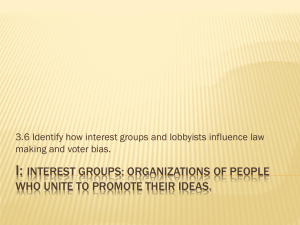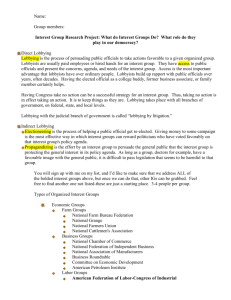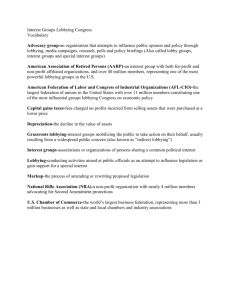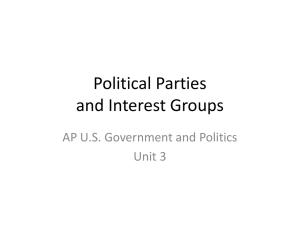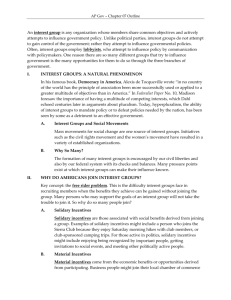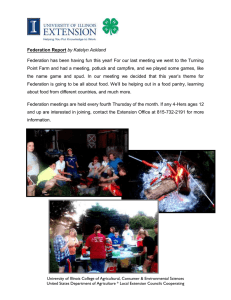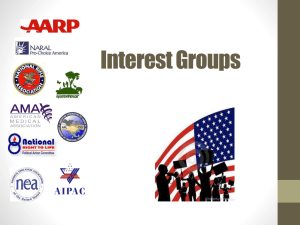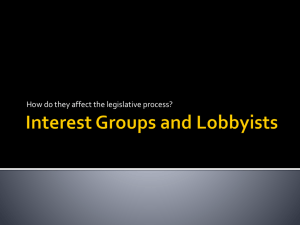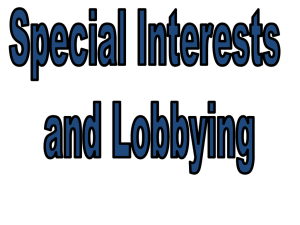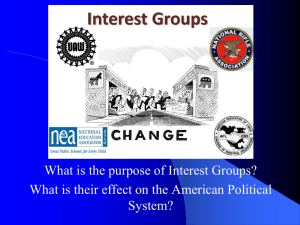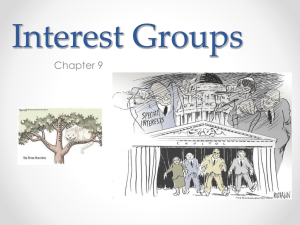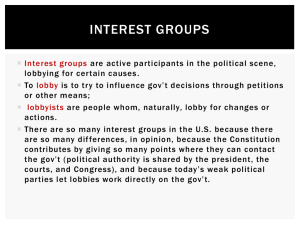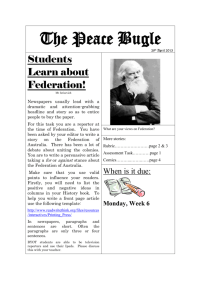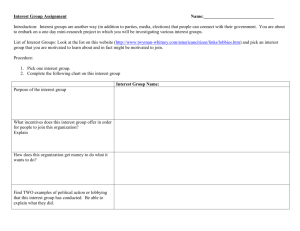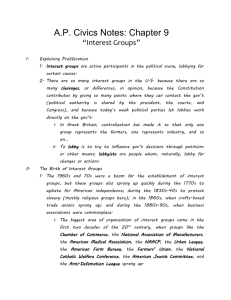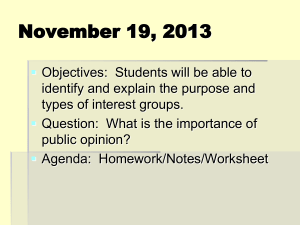INTEREST GROUPS: CHAPTER 9
advertisement
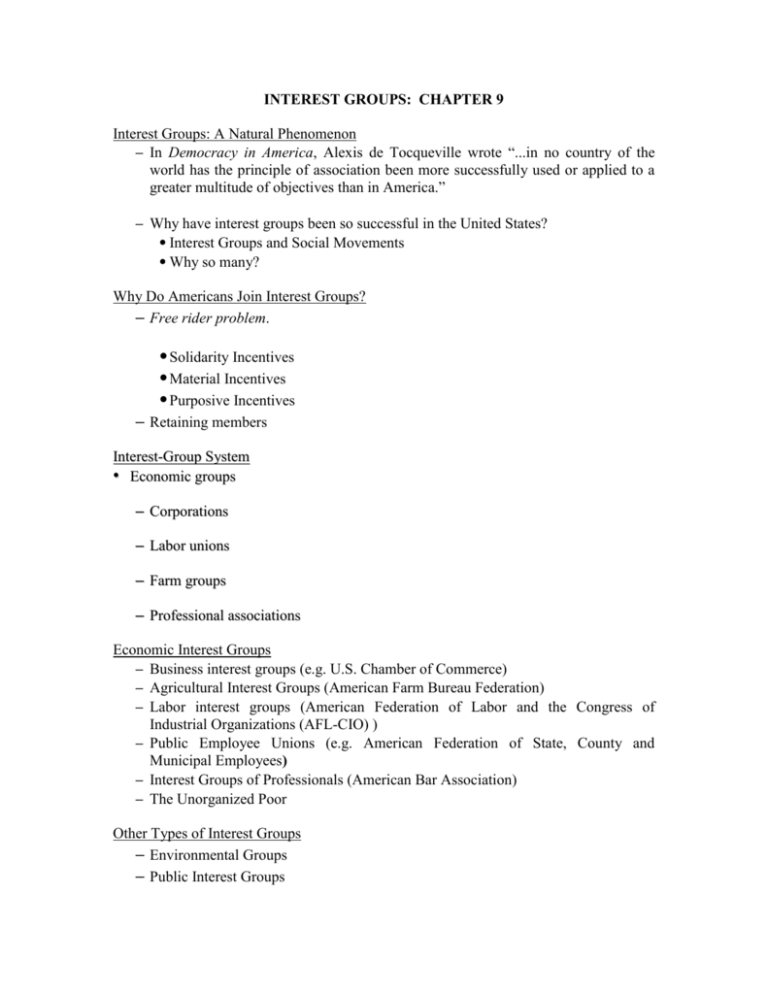
INTEREST GROUPS: CHAPTER 9 Interest Groups: A Natural Phenomenon – In Democracy in America, Alexis de Tocqueville wrote “...in no country of the world has the principle of association been more successfully used or applied to a greater multitude of objectives than in America.” – Why have interest groups been so successful in the United States? • Interest Groups and Social Movements • Why so many? Why Do Americans Join Interest Groups? – Free rider problem. • Solidarity Incentives • Material Incentives • Purposive Incentives – Retaining members Interest-Group System • Economic groups – Corporations – Labor unions – Farm groups – Professional associations Economic Interest Groups – Business interest groups (e.g. U.S. Chamber of Commerce) – Agricultural Interest Groups (American Farm Bureau Federation) – Labor interest groups (American Federation of Labor and the Congress of Industrial Organizations (AFL-CIO) ) – Public Employee Unions (e.g. American Federation of State, County and Municipal Employees) – Interest Groups of Professionals (American Bar Association) – The Unorganized Poor Other Types of Interest Groups – Environmental Groups – Public Interest Groups • Nader Organizations • Other such groups include Common Cause and the League of Women Voters – Single-issue focused groups (AARP, etc.) – Foreign Governments Declining Union Membership What Makes an Interest Group Powerful? – Size and Resources – Leadership – Cohesiveness Interest Group Strategies – Direct Techniques • Lobbying • Publishing the voting records of members of the legislature • Building alliances • Campaign assistance – Indirect Techniques • Generating public pressure • Using constituents as lobbyists • Unconventional forms of pressure (marches, rallies, and demonstrations) Inside Lobbying: Seeking Influence • Webs of influence – Iron triangles – Issue networks Regulating Lobbyists -The Reforms of 1995 Interest Groups and Representative Democracy – Interest Groups: Elitist or Pluralist?


